Civil War Graves and Graves of Unknown Soldiers
Introduction
Text-to-speech Audio
Images
Graves of Veterans
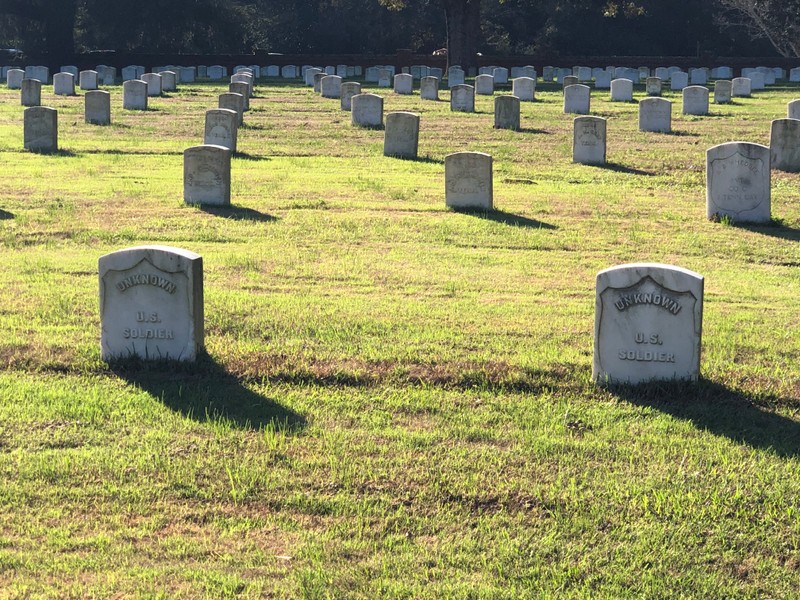
Civil War graves
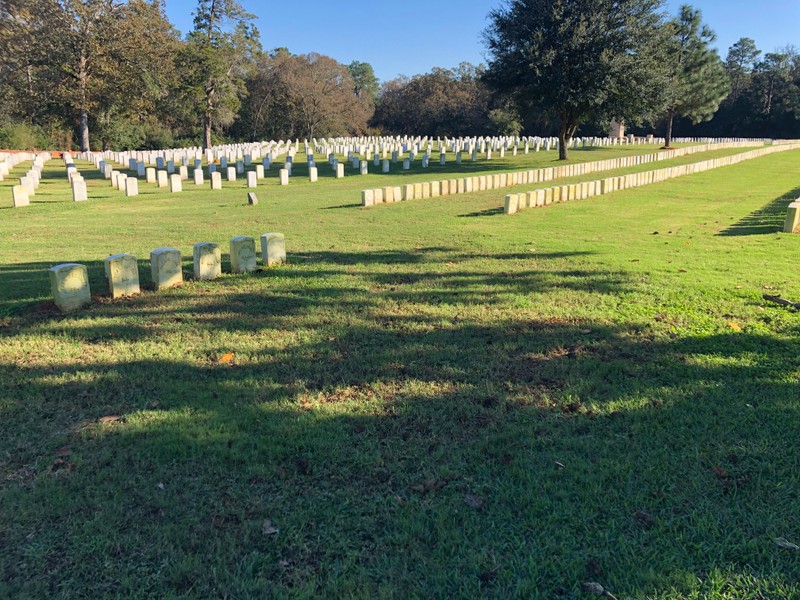
Graves of Unknown Soldiers
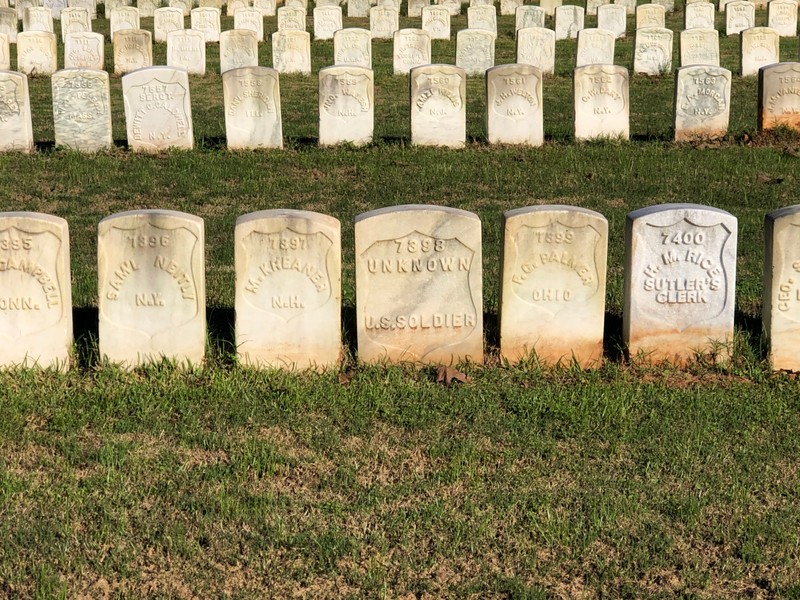
Cemetery gates
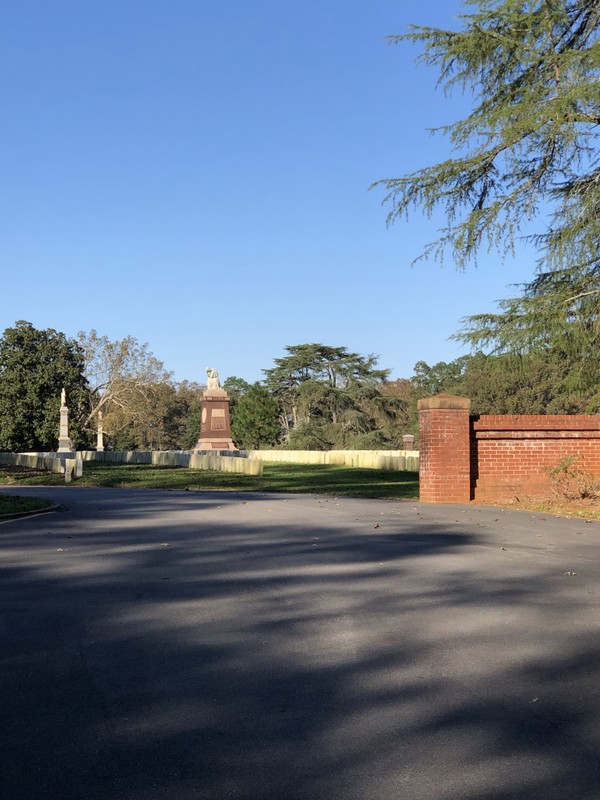
National cemetery, Andersonville, Ga.
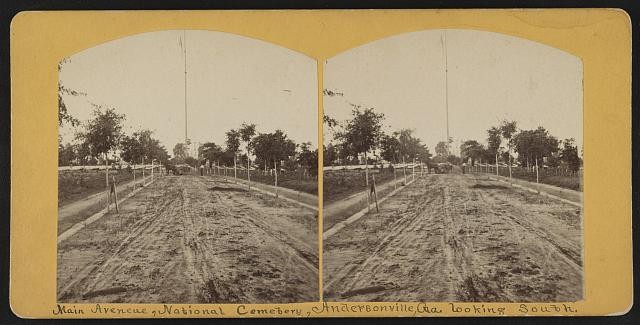
Section of National Cemetery at Andersonville, Ga.
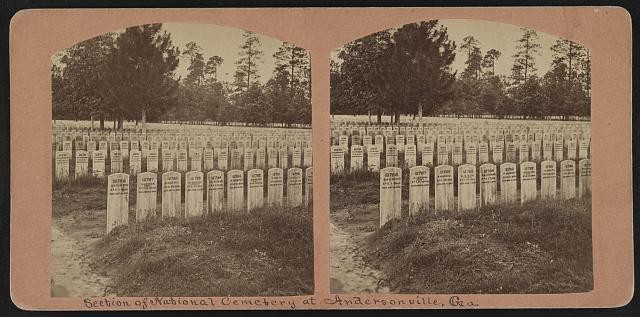
Main avenue, National Cemetery, Andersonville, Ga, looking south
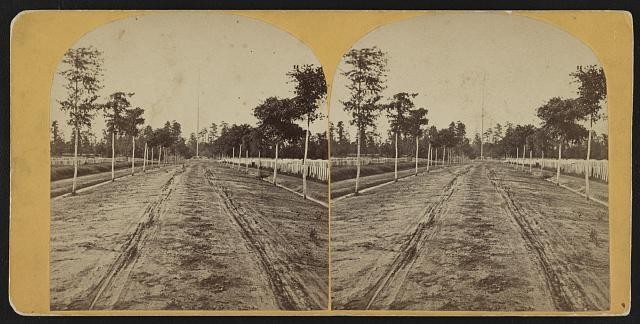
[Dorence Atwater, head and shoulders portrait, facing left. Prisoner at Andersonville]

Newspaper illustration showing Clara Barton raising the American Flag over the National Cemetery on August 17, 1865. Harper's Weekly.
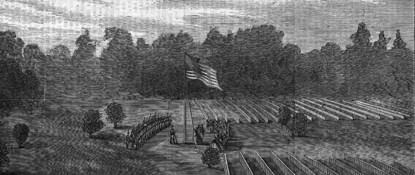
Backstory and Context
Author-Uploaded Audio
This audio describes the experience of John Bickell, a former prisoner at Andersonville who later returned and worked as caretaker of the site. Bickell was the last Union soldier buried in Andersonville National Cemetery. https://youtu.be/6v54PN5FH2o
Text-to-speech Audio
Death rates inside Andersonville prison reached as high as twenty-nine percent, leaving many bodies to be disposed of. Additionally, because of the loss or in cases destruction of Confederate records, true death tolls at Andersonville and other southern prisons may never be known.[1] Dealing with the dead in Andersonville was a monumental task. Joseph Jones, a Confederate surgeon who visited the prison, recalled the inescapability of death as bodies were simply left out to rot instead of promptly dealt with. For example, Jones wrote,
“I found that the dead, as was the usual custom, had been removed out of the ten, and had remained their during the night…from each point of the body, and the scant covering of cloth, poured a stream of Black filth, which painted the body full-length upon the ground.”[2]
Andersonville National Cemetery contains the graves of the Union soldiers who died inside Andersonville Prison. Marked in the first sections of the cemetery- E, F, H, J, and K- these sections contain smaller, white marble tombstones that commemorate each soldiers’ with his name, company and regiment, if possible.[3] The records of prison deaths can be attributed to nineteen year old Dorence Atwater who was captured in July 1863 by the Confederacy. His work detail included recording the names of the deceased and locations of gravesites while working in the camp hospital. Atwater secretly copied this record and later published the list with the help of Clara Barton in 1866.[4] Atwater, who served two months in jail for misappropriation of government property by hiding his secret list of the Union dead, sought help from Barton in searching for soldiers’ graves. Hailed as “the hero of Andersonville” for his efforts, Atwater created his “sacred roll of the dead,” and did all he could to publish the list.[5] Clara Barton received permission to establish a search bureau at Andersonville from Edwin M. Stanton, Secretary of War, and traveled to Andersonville on July 26, 1865, the founding day of the cemetery.[6]
The cemetery today is an expanded version of the original cemetery as veterans continue to be buried inside. In 1893, newspapers across the South reflected on the cemetery, with one Columbia, South Carolina paper writing that inside lie “representatives from every State in the Union.” The National Cemetery was:
“with its 13,000 white headstones, resembling a great army of the dead…is surrounded by a brick wall. The grounds are nicely laid out, walks well paved, the lawns kept nicely shaved…All but a few hundred of the graves are laid out in long straight lines with avenues between, just as they were dug by the burial corps of prisoners who laid side by side their dead brethren.”[7]
When visiting the cemetery, tourists can view the graves marked “unknown soldiers” that commemorate the five hundred Union prisoners whose identities were never found. Containing over 20,000 interments in 18 sections, the cemetery also offers a memorial section and a central flagpole.[8] Clara Barton raised the very first national flag within the cemetery in 1865. Tourists are reminded to be reverent and respectful while in the cemetery as active funerals may be taking place.
Sources
[1] James McPherson, Battle Cry of Freedom: The Civil War Era (Oxford: Oxford University Press, 1988), 802.
[2] Joseph Jones, quoted in James Breedon, “Andersonville—A Southern Surgeon’s Story,” Bulleting of the History of Medicine 47, no. 4 (July 1, 1973): 326.
[3] “Andersonville National Cemetery,” Andersonville National Historic Site Brochure, National Park Service, U.S. Department of the Interior, accessed November 14, 2020.
[4] Edward Patenaude, “Prison Became Memorial; Clara Barton cared for Civil War dead as well as injured,” Telegram & Gazette, July 25, 1993, ProQuest Newspapers (accessed December 16, 2020); and Elizabeth Pryor Brown, Clara Barton, Professional Angel (Philadelphia: University of Pennsylvania Press, 2011).
[5] Mrs. Frances D. Gage, “Dorence Atwater: The Hero of Andersonville,” The Independent…Devoted to the Consideration of Politics, Social and Economic Tendencies, History, Literature, and the Arts (1848-1921) 18, Issue 900 (February 28, 1866): 3. Proquest Magazines, accessed December 16, 2020.
[6] Edward Patenaude, “Prison Became Memorial: Clara Barton Cared for Civil War dead as well as injured,” Telegram & Gazette, July 25, 1993, ProQuest Newspapers (accessed December 16, 2020).
[7] Author Unknown, “Andersonville of Today. The Prison Pen Now the Property of the Grand Army,” The State, Columbia, SC, February 16, 1893. America’s Historical Newspapers, accessed December 16, 2020.
[8] “Andersonville National Cemetery,” Andersonville National Historic Site Brochure, National Park Service, U.S. Department of the Interior, accessed November 14, 2020.
Personal photograph, Erin Del Giudice November 14, 2020
Personal Photograph Erin Del Giudice Nov. 14 2020
Personal Photograph, Erin Del Giudice Nov. 14, 2020
Personal Photograph, Erin Del Giudice Nov. 14, 2020
Library of Congress Prints and Photographs Division Washington, D.C. 20540 USA http://hdl.loc.gov/loc.pnp/pp.print
Library of Congress Prints and Photographs Division Washington, D.C. 20540 USA http://hdl.loc.gov/loc.pnp/pp.print
Library of Congress Prints and Photographs Division Washington, D.C. 20540 USA http://hdl.loc.gov/loc.pnp/pp.print
Library of Congress Prints and Photographs Division Washington, D.C. 20540 USA
NPS/Andersonville National Historic Site; nps.gov
